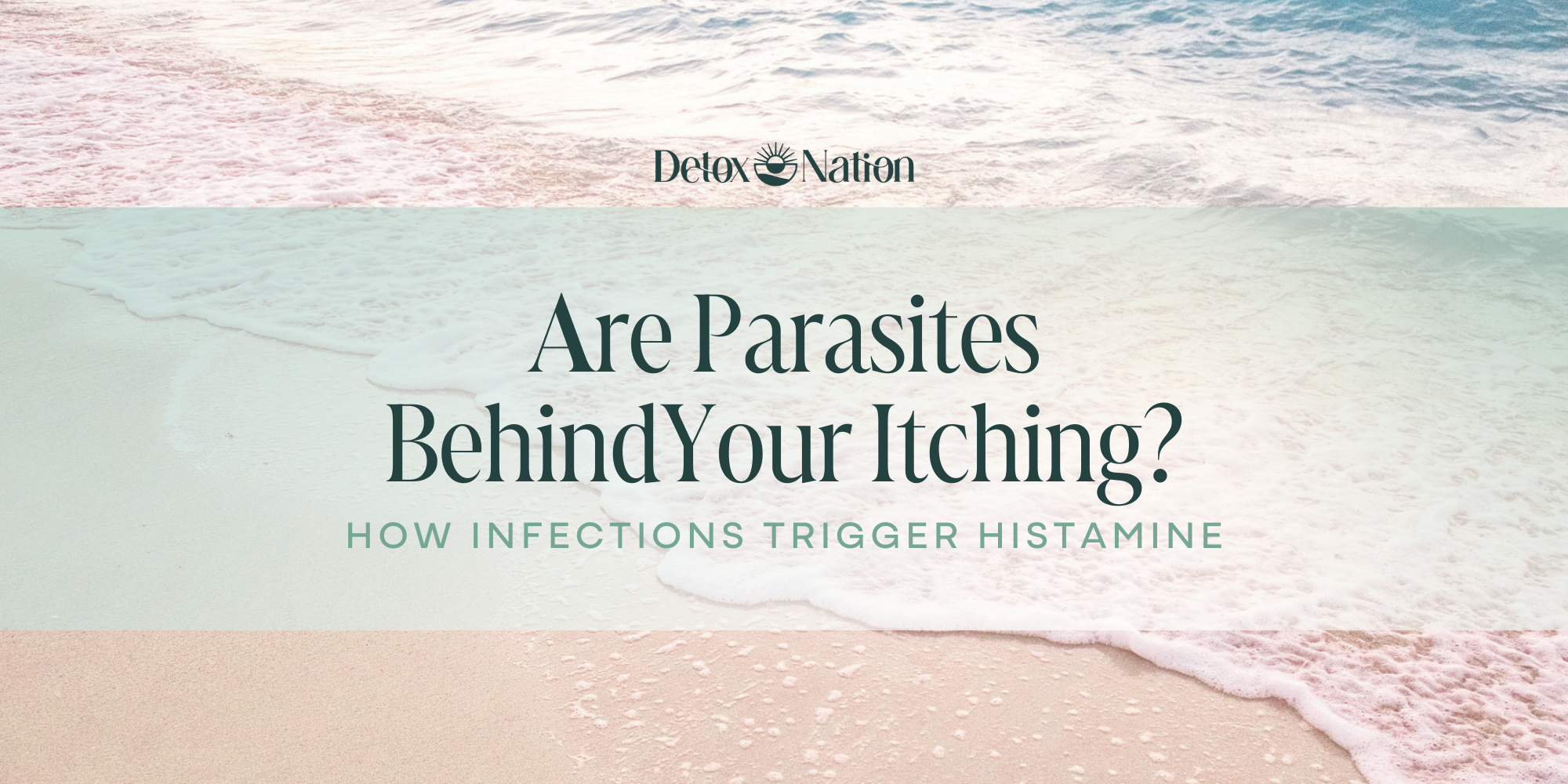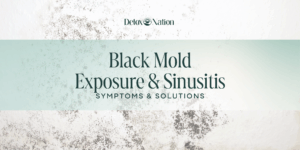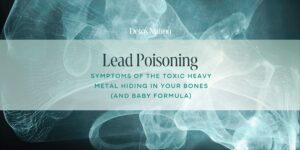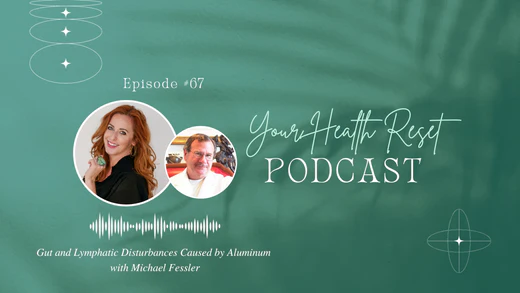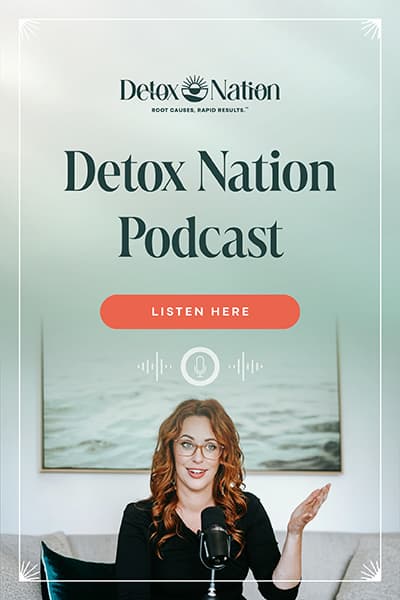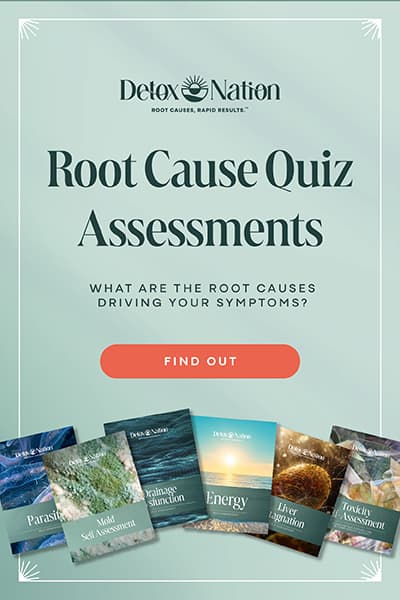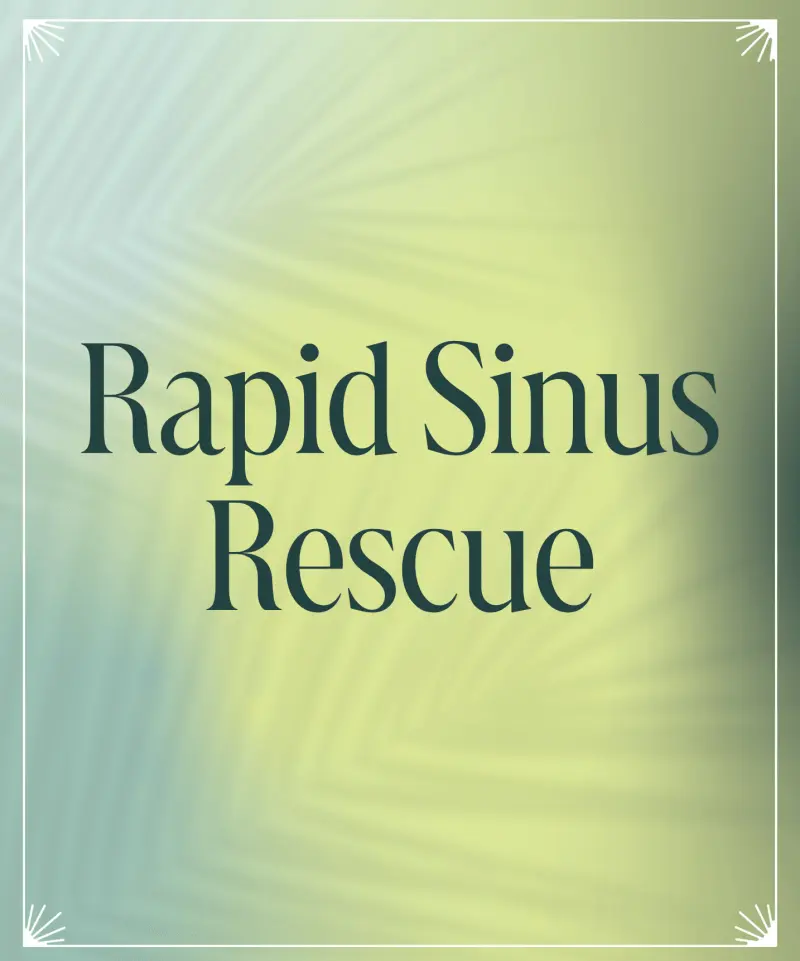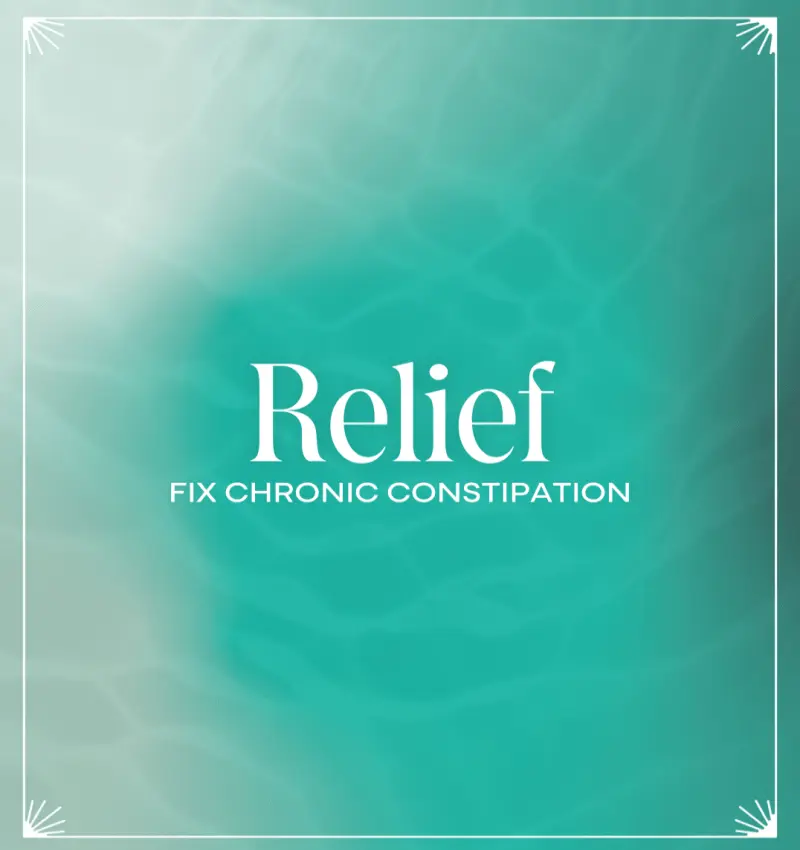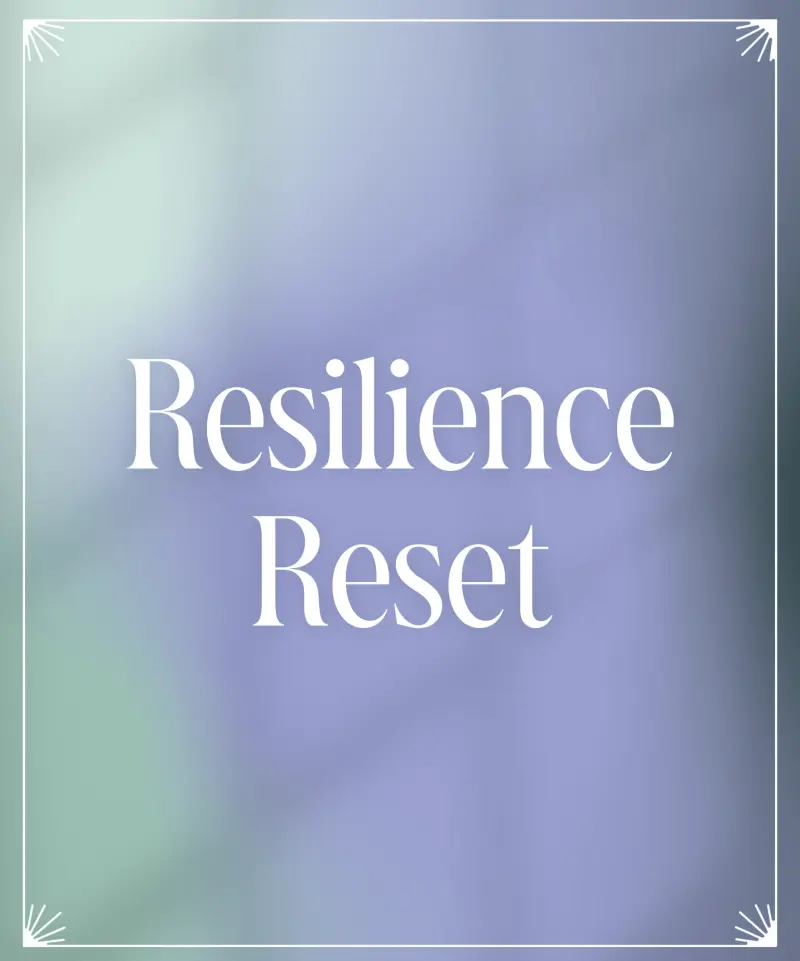You cut the wine.
You stopped eating aged cheese, tomatoes, chocolate—basically everything that brings joy.
You even stopped using your favorite detergent.
And still… your skin is on fire.
Every night, it’s the same: a fresh wave of itchy, red welts climbing across your neck, your arms, the backs of your thighs.
You try to pinpoint the trigger, but it feels like the answer is: air.
If you’ve been told you have “histamine intolerance” and handed a list of 64 foods to avoid, I want you to know: this isn’t the whole story.
Histamine intolerance is a symptom.
A giant blinking warning light on your dashboard saying, “Hey, something’s not right in here.”
And one of the most overlooked root causes?
Parasites.
These freeloaders are disruptive in ways most practitioners aren’t trained to detect. They can trigger mast cell overactivation, trash your gut lining, jam your detox pathways, dysregulate your nervous system, and send your histamine bucket overflowing—all without being picked up by standard stool tests.
If you’re dealing with chronic hives (aka urticaria), bloating, insomnia, anxiety spikes, or that “I can’t eat anything without reacting” vibe… parasites may be at the root.
Key Takeaways
- Histamine intolerance isn’t a root cause—it’s a signal.
- Parasites wreak havoc on your gut, detox systems, nervous system, and histamine balance.
- Healing happens when you reset the terrain.
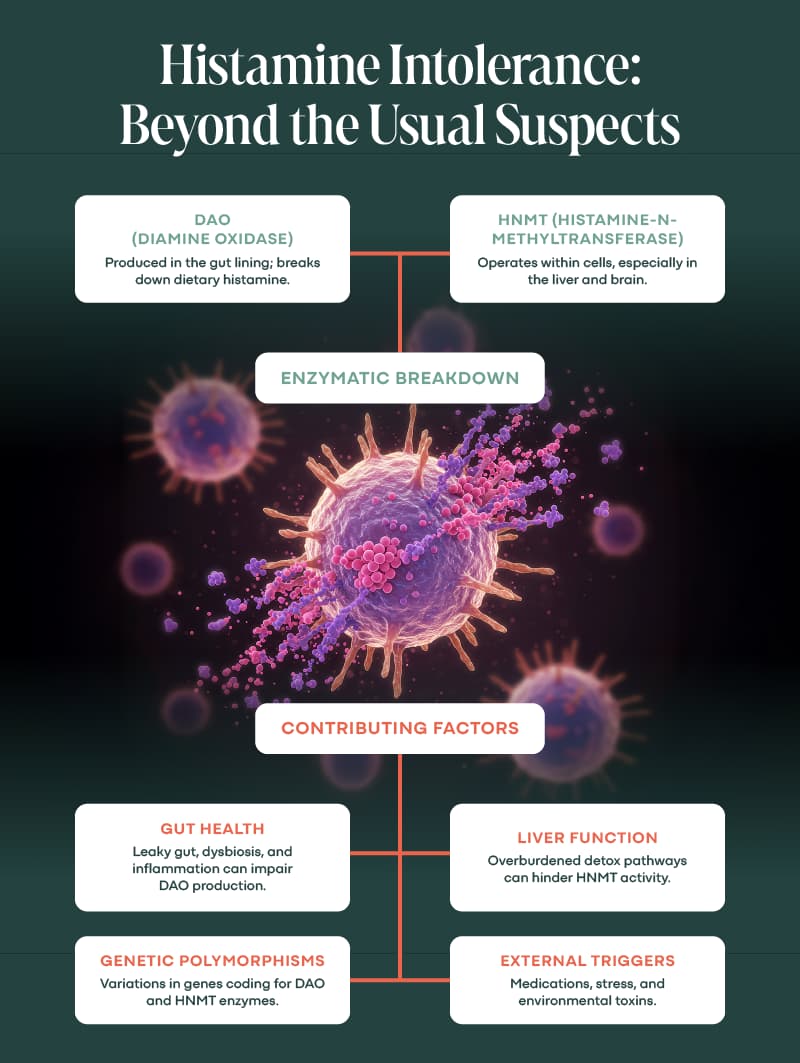
What Even Is Histamine Intolerance?
Let’s get one thing straight: histamine is not the enemy.
It’s a critical part of your immune system, your brain chemistry, and even your digestion.
Histamine helps your body respond to injury, regulate stomach acid, and keep you alert (1, 5, 8, 10).
In the right amount, at the right time, histamine is your friend.
But when it starts to pile up faster than your body can break it down?That’s when the symptoms show up.
Here’s the short version:
Histamine intolerance happens when your body can’t keep up with histamine clearance (5, 10, 11, 17, 21, 22, 23, 28).
It’s not about making too much—it’s about not being able to process what’s already there.
Two key enzymes are responsible for histamine breakdown:
- DAO (diamine oxidase): This lives in your gut lining and handles the histamine in your food.
- HNMT (histamine-N-methyltransferase): This one works inside your cells, mostly in your liver and brain.
If either of these is compromised (we’ll talk about why in a minute), histamine starts to build up like traffic on a one-lane road—and your body starts signaling distress.
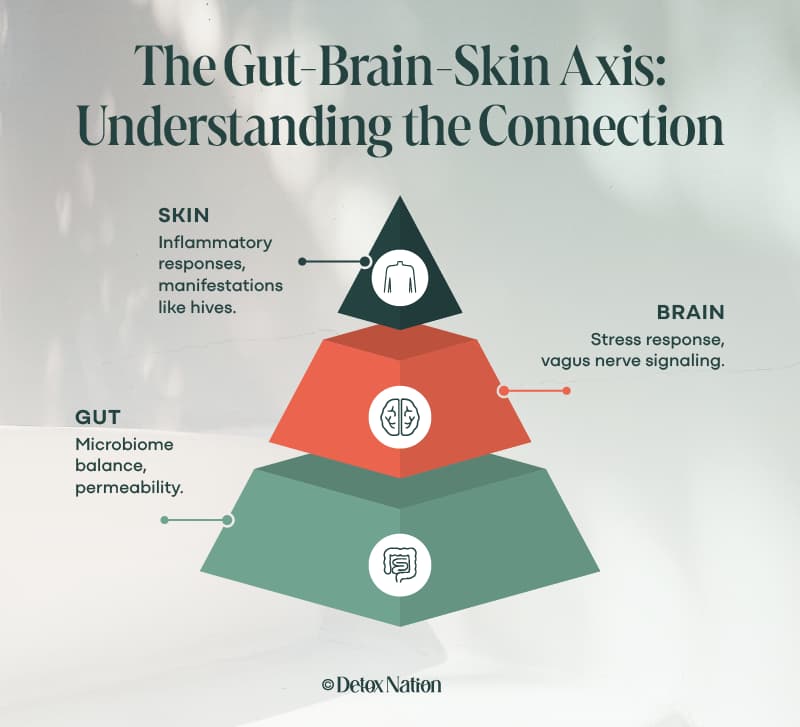
You might recognize the signs:
- Eczema or unexplained rashes (4, 10, 17, 18, 21, 22, 24, 28)
- Itchy skin, eyes, or ears (4, 9, 10, 11, 14, 16, 17, 21, 22, 24, 26, 28)
- Flushing, especially after meals (9, 10, 11, 14, 16, 18, 26, 28)
- Gas, bloating, reflux, and cramping even from “safe” foods (4, 5, 10, 11, 14, 16, 18, 21, 22, 23, 24, 28)
- Fast heart rate, dizziness, palpitations, or low blood pressure (4, 5, 9, 10, 11, 14, 17, 21, 22, 23, 24, 26, 28)
- Insomnia, fatigue, or brain fog (3, 18, 21, 26)
- Anxiety out of nowhere (49)
- Headaches or sinus pressure that don’t make sense (3, 4, 5, 9, 11, 17, 18, 21, 22, 23, 24, 26, 28)
- Wheezing, asthma, congestion, or shortness of breath (4, 9, 10, 11, 14, 18, 21, 22, 24, 28)
- Constipation, diarrhea, nausea, or vomiting (3, 4, 5, 9, 10, 11, 14, 16, 17, 18, 21, 22, 23, 24, 28)
- A feeling of fullness after eating (4, 5, 22, 23, 24)
- Muscle, bone, or joint pain (18, 21)
- Menstrual irregularities (11, 18, 24, 28)
And hives? Those are textbook histamine (4, 9, 10, 11, 14, 18, 21, 22).
They’re caused by mast cells, a type of immune cell loaded with histamine grenades (2, 3, 9, 12, 14, 15, 25, 26, 27).
When those mast cells get triggered, they release histamine and other mediators into the surrounding tissues—and boom: swelling, redness, heat, itch (2, 9, 12, 14, 15, 27).
It’s not your skin that’s freaking out.
It’s your immune system saying, “We’re under threat. Deploy the histamine.”
But what’s actually threatening you?
Hint: it’s not the strawberries.
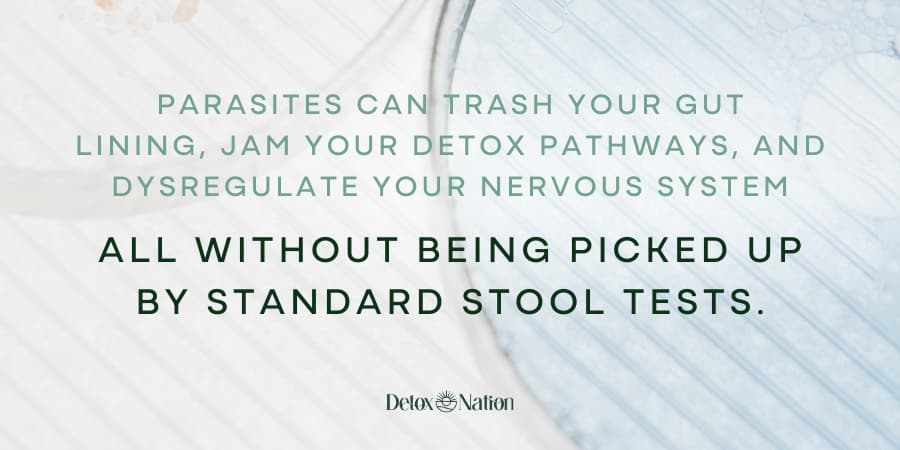
Parasites—Why They’re More Common Than You Think
Let’s clear something up right now: parasites are not just a third-world problem.
They’re a terrain problem.
If you’ve ever eaten sushi, traveled outside the country, owned a pet, walked barefoot in your backyard, drank from a natural spring, or eaten produce that wasn’t triple-scrubbed—congrats, you qualify.
And if your gut terrain is inflamed, sluggish, or toxic?
That’s basically a red carpet for parasites to move in and make themselves at home.
Most people have them. They’re just not getting found.
Why? Because most testing methods are stuck in the 1990s.
Conventional stool tests look for adult parasites in a single sample and often miss the larval stages—or they fail to catch the critters that hide behind biofilm, that slimy, invisible cloak parasites use to avoid detection by your immune system (and your practitioner).
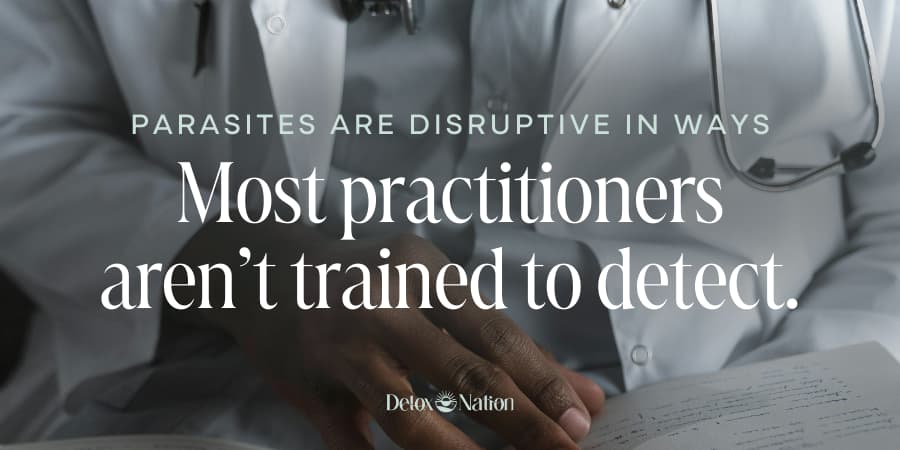
And let’s be honest—how often does a doctor even test for parasites when you walk in with hives, insomnia, or food reactions?
Parasites are sneaky.
They’re highly adaptive.
And they don’t just sit around waiting to be noticed.
They:
- Immediately suppress your immune system – the very system you rely on to protect you from invaders (37, 38)
- Change shape based on your internal chemistry (called pleomorphism) (36, 41)
- Reproduce in cycles, so symptoms flare and disappear (and flare again)
- Release toxins (endotoxins and ammonia) that overload your detox pathways
- Change the composition of your gut microbiome in favor of “bad” bacteria to keep your immune system distracted (39, 40)
- Weaken your gut lining so other infections can slip through (40, 42)
- And worst of all, they eat before you do—stealing your nutrients, siphoning your minerals, and feeding off your life force like it’s a buffet
Still wondering why your body feels yucky all the time?
Parasites rarely show up alone.
They travel with mold, heavy metals, and other opportunistic organisms (43, 44).
It’s like a dysfunctional party in your gut—and everyone’s making messes.
And if you’re already struggling with histamine overload?
These little invaders are expert button-pushers.
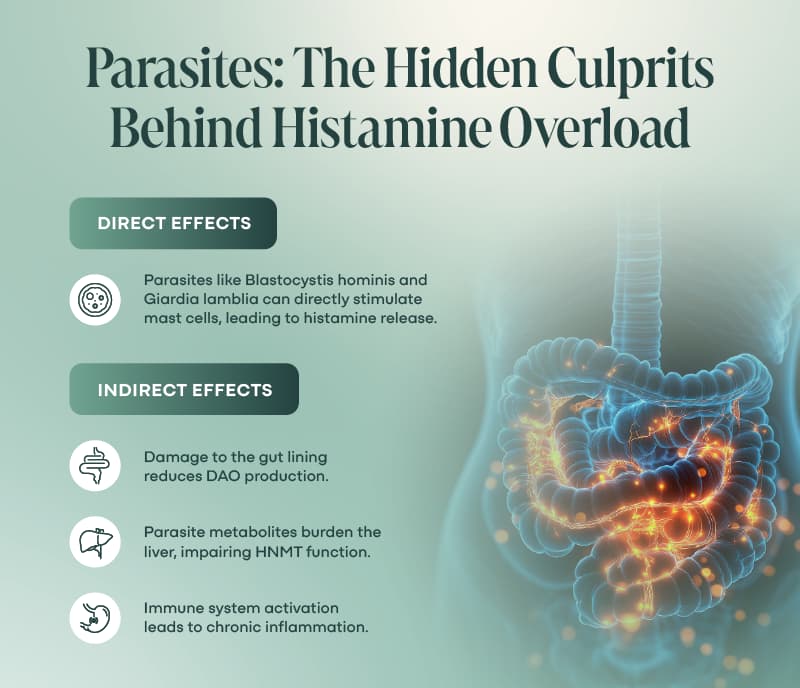
Parasites and Histamine: The Direct Hit
So how exactly do parasites flip your histamine switch into overdrive?
Let’s break it down.
1. They Activate Mast Cells Directly.
Certain parasites (like Blastocystis hominis, Giardia, and Strongyloides) are directly linked to skin conditions like chronic urticaria—yep, the fancy name for recurring hives (2, 5, 24, 25, 29, 30, 31, 32, 33, 34, 35).
Why?
Because they stimulate mast cells, the histamine-loaded immune cells responsible for those maddening flares (5, 10, 23).
Your mast cells aren’t being dramatic.
They’re responding to what they perceive as a threat (2).
And a squirmy, burrowing pathogen absolutely qualifies.
Even worse, parasites often stay hidden.
So, your immune system stays on high alert—a constant low-level freakout that keeps mast cells primed and ready to explode.
The longer the exposure, the more sensitive your system becomes.
You go from reacting to true threats… to reacting to leftovers.
2. They Sabotage the DAO Enzyme
Remember DAO—the enzyme in your gut lining that breaks down food-based histamine?
Parasites love to trash the intestinal lining (40, 42).
They physically damage the villi where DAO is produced, slashing your ability to clear histamine from meals.
So, every bite of food becomes a potential trigger—not because the food is “bad,” but because the system meant to process it is offline.
This is why you can go from tolerating foods one week to reacting the next—and why low-histamine diets rarely solve the whole problem.
3. They Dump Toxins That Keep You Inflamed
Parasites aren’t just freeloading—they’re pooping in your terrain.
Their waste products (like ammonia and lipopolysaccharides) burden your liver, slow down your methylation cycle, and keep your detox pathways clogged.
That toxic burden amplifies histamine production and leaves your body with fewer resources to neutralize it.
Toxins also increase histidine decarboxylase, the enzyme that makes histamine from amino acids—so you’re not only struggling to break histamine down, but you’re also making more of it.
4. They Trigger the Cell Danger Response
Your body knows when something doesn’t belong—and when that signal doesn’t get resolved, your cells shift into survival mode.
This “cell danger response” triggers mitochondrial dysfunction, inflammation, and—you guessed it—more histamine release (45, 46).
And because your mitochondria help regulate mast cell behavior, once they’re impaired, histamine reactions become even more volatile.
You’re having a logical, biological response to hidden invaders.
Struggling with chronic symptoms?
Don’t just mask them—get to the root. Take the Parasite Self-Assessment and start your path to real healing.
Take the Parasite AssessmentThe Indirect Sabotage: Parasites Wreck Your Detox Systems
Even if parasites aren’t throwing histamine grenades directly at your mast cells, they’ve got plenty of backdoor sabotage moves that lead to the same outcome.
1. They Punch Holes in Your Gut Lining
Your gut lining is supposed to be a selectively permeable barrier—like a bouncer at the door, deciding what gets in and what stays out.
Parasites?
They don’t ask for permission.
They dig, latch, and burrow.
That physical damage leads to intestinal permeability—aka “leaky gut.” (40, 42)
Now, undigested food particles, bacterial byproducts, and toxins slip into your bloodstream, triggering immune flare-ups and—you guessed it—more histamine.
When the lining is compromised, DAO production drops, and suddenly even low-histamine foods become a problem (3, 5, 24).
It’s not the food. It’s the terrain.
2. They Clog the Drainage Pathways
Your body has a beautifully designed drainage system: liver, lymph, kidneys, skin, lungs, and gut.
When these systems flow, you’re detoxing effortlessly—most of it without even thinking about it.
But parasites clog the works:
- They excrete toxic byproducts like ammonia, phenols, and aldehydes
- They jam up bile flow, which is critical for toxin removal and hormone clearance
- They overload your liver, forcing it to prioritize survival over detox
- They may even cause physical obstruction of your drainage pathways
The result?
A sluggish system where toxins recirculate instead of being cleared—and histamine is just one of those toxins.
If your drainage systems are bogged down and your gut lining is Swiss cheese, you’ll keep reacting no matter what’s on your plate.
But these systems can be rebooted.
They were designed to recover—if you give them the right support and stop the sabotage at its source.
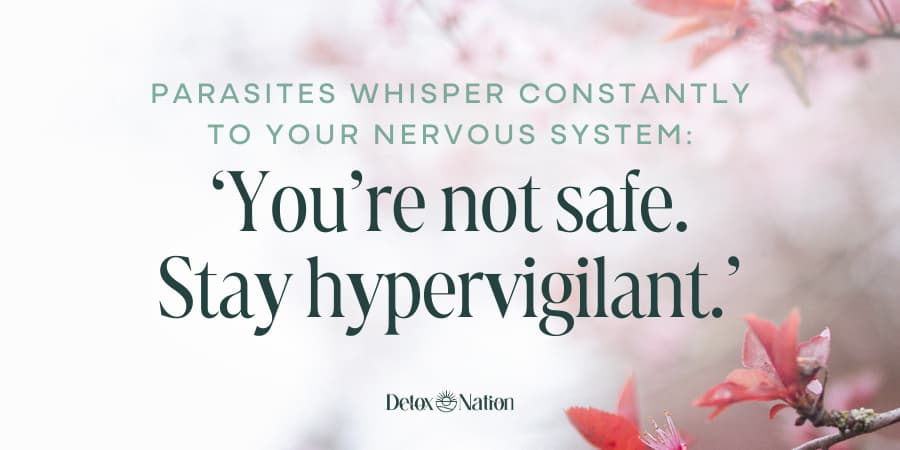
Nervous System, Mast Cells & the Vibe of ‘Unsafe’
If your nervous system doesn’t feel safe, nothing else works the way it’s supposed to.
Not digestion. Not sleep. Not detox. Not hormone balance.
And definitely not histamine regulation.
Your Nervous System Is Mission Control
Think of your nervous system as your body’s control center.
When it’s regulated, you’re in what’s called the parasympathetic state—rest, digest, repair.
When it’s dysregulated, you’re in fight, flight, freeze, or fawn—survival mode.
Here’s why that matters: Mast cells respond directly to nervous system signals.
When you’re stressed, panicked, or even just constantly “on alert,” your body tells those mast cells, “Hey, we’re in danger—better stay ready.”
They become twitchy, overreactive, and hair-trigger sensitive.
Sound familiar?
This is how you can get a histamine reaction just from strong emotions, like embarrassment or overwhelm.Your nervous system isn’t broken—it’s overprotective.
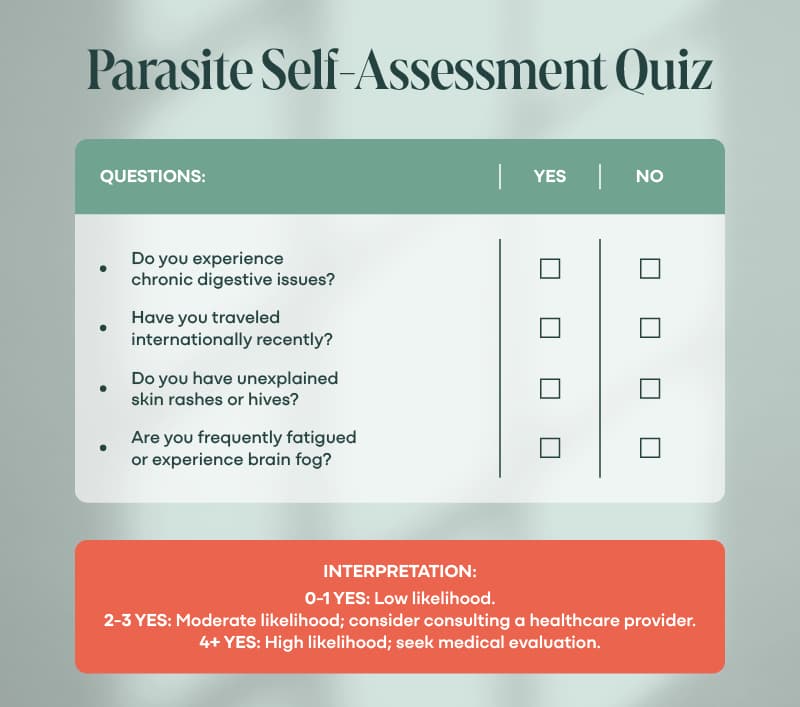
Parasites Keep You Stuck in Survival Mode
Parasites don’t just trigger your immune system.
They whisper constantly to your nervous system: “You’re not safe. Stay hypervigilant.”
This happens through chemical messengers, Vagus nerve disruption, and sheer physiological stress.
The longer they’re in your system, the more “unsafe” your internal landscape feels.
This ongoing tension activates something called the cell danger response, where your body downshifts into conservation mode—halting detox, impairing mitochondrial function, and yep, increasing histamine sensitivity (45, 46).
It’s like your body’s saying: “I can’t process this right now—we’re too busy surviving.”
Chronic Stress and Parasites: Histamine Soup
Now layer in a history of trauma, emotional repression, financial fear, or years of being dismissed by doctors?
Your body doesn’t just carry parasites.
It carries pattern recognition.
And those patterns feed the cycle of reactivity (48).
If you’ve ever felt like you’re “too sensitive” or “too much”—what if that’s just the nervous system doing its best to protect you in an unsafe internal terrain?
The good news: this cycle can be interrupted. But not by pushing harder, cutting more foods, or doing another elimination diet.
It starts with building signals of safety—to your body, your nervous system, your inner environment.
Because until your biology knows you’re safe, it won’t let go of the alarm.
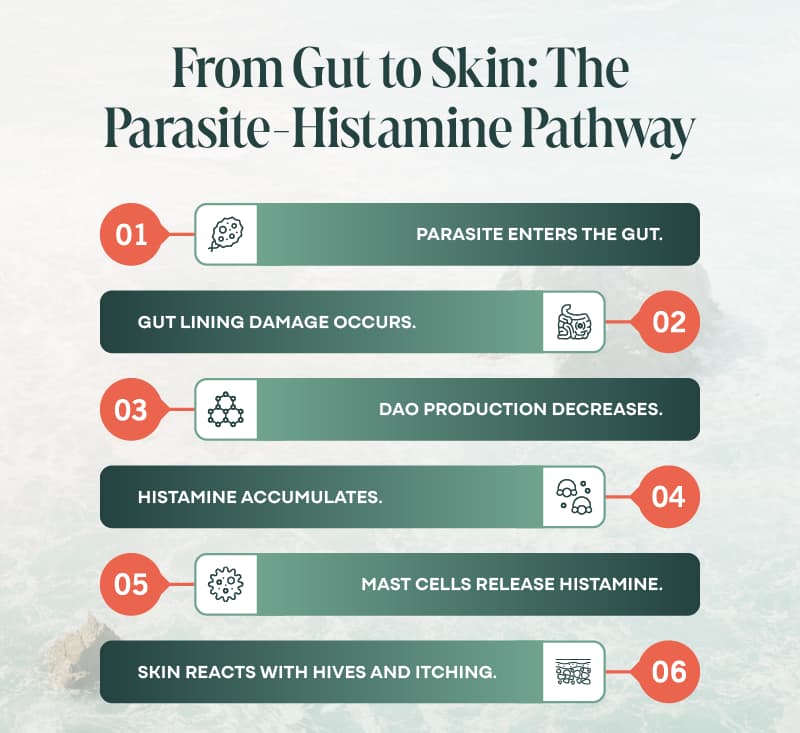
Medications, Mitochondria & Histamine
Let’s talk about the stuff that’s supposed to help—but often quietly fuels the fire.
Medications can contribute to histamine intolerance and mitochondrial dysfunction in ways most people—and practitioners—don’t realize.
Especially when you’re already dealing with chronic symptoms and a nervous system on edge.
1. Antidepressants and Antihistamines: Not Always Helpful
Certain antidepressants—especially SSRIs and tricyclics—can affect histamine metabolism (24, 28) by:
- Blocking DAO enzyme activity
- Changing gut motility and pH, which affects the microbiome
- Increasing histamine levels indirectly through microbiome disruption or liver burden
And here’s the wild part: Long-term antihistamine use?
It can sensitize your system more over time.
When you suppress histamine release without addressing the root cause, your body doesn’t “learn” regulation—it just presses harder.
(Think of holding a beach ball underwater. Sooner or later, it pops back up.)
2. Mitochondria Matter (More Than You Think)
Mitochondria aren’t just your energy producers—they also help regulate mast cell behavior.
If your mitochondria are sluggish, inflamed, or damaged (from infections, toxins, or—you guessed it—parasites), your mast cells become unstable.
That means:
- More histamine gets released
- It takes longer to recover from reactions
- Your energy tanks even faster after a flare
This is why symptoms like chronic spontaneous urticaria, brain fog, and fatigue tend to show up together.
They’re all downstream from the same mitochondrial fire.
And guess what’s known to damage mitochondria (47)?
- SSRIs and benzodiazepines
- Statins and blood pressure meds
- NSAIDs like ibuprofen
- Antibiotics
- Proton pump inhibitors (PPIs) like omeprazole
Each of these adds another layer of stress on your body’s energy systems, gut lining, and detox pathways—even if they helped something else short-term.
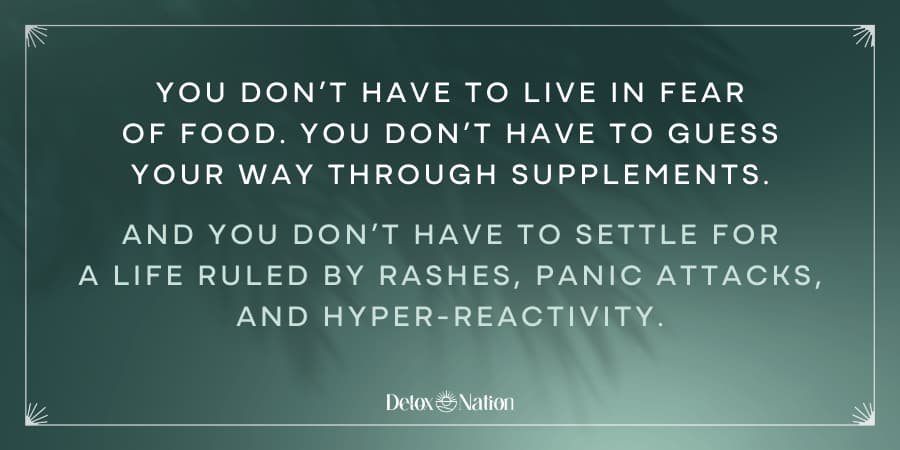
Why You’re Not Crazy—But You Are Overdue for a Strategy
You’ve probably heard it all:
“Your labs look fine.”
“It’s just stress.”
“Maybe you’re allergic to yourself.” (Yes, that’s a real thing a client was told.)
By the time someone finds their way here, they’ve usually been dismissed so many times that they start wondering if they are the problem.
Let me be clear: you’re not crazy.
You’re having a completely logical response to an overwhelmed body.
It makes perfect sense to feel exhausted, itchy, bloated, anxious, and reactive when:
- Your gut lining is compromised
- Your mast cells are in fight-or-flight mode
- Your mitochondria are running on fumes
- Your detox pathways are jammed
- And you’ve got microscopic squatters throwing raves in your digestive tract
No food journal or meditation app can override that kind of internal chaos.
But you do need a strategy.
Because this doesn’t get better on its own—it just gets more entrenched.
Here’s what I mean by “strategy”:
- Not a list of supplements to throw at the wall
- Not another elimination diet that leaves you eating five foods
- Not gaslighting yourself into “positive vibes only” when your skin is breaking out and your brain is on fire
I’m talking about a layered, terrain-based plan—one that supports your body’s built-in intelligence and helps it re-regulate:
Once you start removing the true blockers, your body remembers what to do.
(It never forgot—it was just busy trying to survive.)
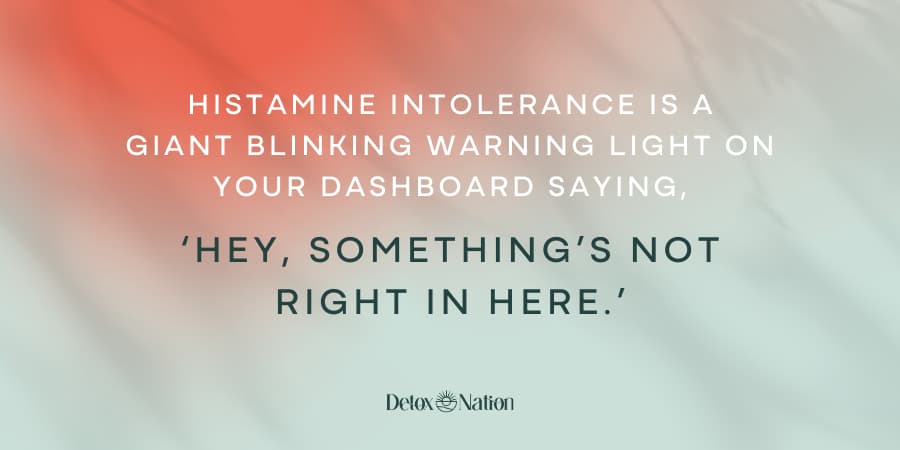
What You Can Do About It (Without Losing Your Mind)
Most people discover histamine intolerance the hard way.
After a panic attack from avocado toast.
After waking up at 2am, heart pounding, arms covered in hives, brain stuck in a doom loop.
After a doctor says, “Well, maybe just take an antihistamine and avoid trigger foods.”
If that worked, you wouldn’t be here.
So now what?
Here’s what I want you to know: You can lower your histamine load.
You can build resilience again.
But you need to work with your biology, not fight it.
Let’s keep it simple:
Regulate Your Nervous System Like It Matters
This isn’t a “nice to have.”
It’s the foundation of all healing.
Daily nervous system support could look like:
- Vagus nerve stimulation (gargling, humming, gentle cold exposure)
- Gentle breathwork (longer exhales than inhales)
- Trauma-informed therapy or somatic practices
- Co-regulation with people who feel safe in your system
Your body won’t detox—or stop flaring—until it feels safe.
Support Drainage Pathways
Before you go hunting for parasites or cutting more food, you need to open the exits.
Otherwise, all those toxins just get stirred up and recirculated.
Start with:
- Daily bowel movements (magnesium glycinate or citrate can help)
- Hydration with minerals (add trace minerals or sea salt to distilled water)
- Lymphatic movement (walks, dry brushing, gentle rebounding)
- Castor oil packs over the liver to encourage bile flow
If your drainage pathways are blocked, even the best protocol will backfire.
Evict the Parasites
Not with a one-size-fits-all supplement you saw on Instagram.
With a guided, phased approach that supports your nervous system and terrain.
That means:
- Binding toxins as you kill
- Cycling herbs
- Continuing to open pathways
- Watching for die-off signals (and slowing down when needed)
Because when the invaders go, histamine overload often drops dramatically.
Rebuild from the Inside Out
Once your gut isn’t a war zone and your immune system isn’t in full panic mode, you can focus on:
- Mitochondrial repair (think CoQ10, PQQ, B vitamins, red light, sleep)
- Gut lining restoration (butyrate, glutamine, colostrum, whole-food fiber)
- Mineral repletion (especially sodium, potassium, magnesium, and zinc)
You don’t need to be perfect—you just need to support the body you’re in.
This is how you move from reaction to resilience.
Not by micromanaging every bite.
Not by trying to control symptoms into submission.
But by listening to what your body’s been saying all along:
“I’m overwhelmed. I need help clearing the mess before I can function like myself again.”
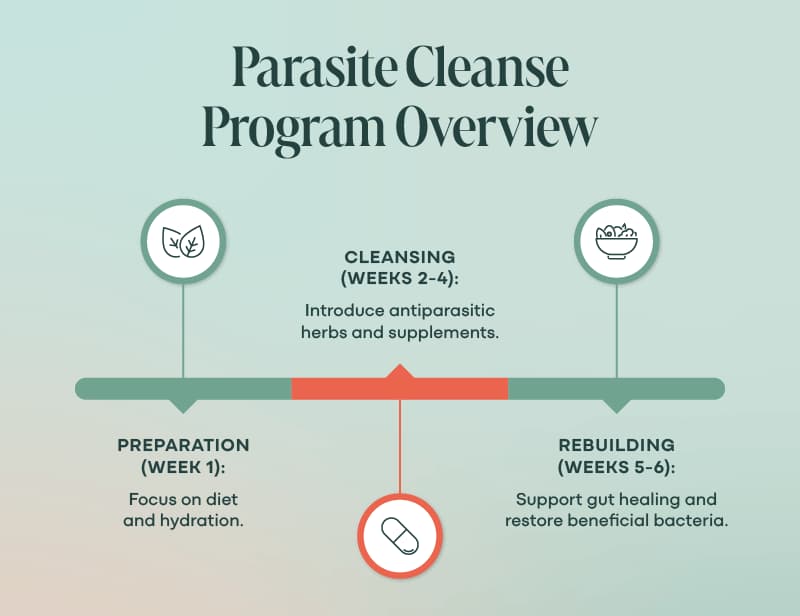
You Don’t Have to Live in Fight-or-Flush Mode
Histamine intolerance isn’t a random curse.
It’s not proof that your body is broken.
It’s a signal—a breadcrumb trail pointing back to deeper imbalances.
And one of the most overlooked drivers?
Parasites.
Not the cute ones from travel documentaries.
The invisible kind that steals your nutrients, trashes your gut lining, keeps your nervous system locked in survival mode, and pushes your histamine response into overdrive.
But here’s what’s just as true:
Your body is brilliant.
Your symptoms are logical.
Your terrain is changeable.
You don’t have to live in fear of food.
You don’t have to guess your way through supplements.
And you don’t have to settle for a life ruled by rashes, panic attacks, and hyper-reactivity.
What you do need is a framework:
- One that honors the nervous system
- Opens drainage before stirring up toxins
- Gently evicts what doesn’t belong
- And rebuilds the systems that keep you resilient
It’s not magic. It’s biology.
And if you create the right conditions, your body knows exactly how to heal.
If I can do it, so can you.
(I say that as someone who was scared of binders, hated taking pills, and needed three pep talks just to start castor oil packs.)
So, are you ready to stop chasing symptoms and start resolving the root?
Take the free Parasite Self-Assessment and find out if your gut has roommates you didn’t invite.
Or are you ready to evict what doesn’t belong?
Join the Rapid Parasite Release and get the step-by-step system to clear parasites safely—without crashing your body or guessing your way through it.
Your past health doesn’t have to be your future health.
You’re not too late, too sensitive, or too broken—you’re just one step away from momentum.
Release Parasites and Feel Like Yourself in 8 Weeks or Less
Rapid Parasite Release is the only effective and customizable approach on the market that helps you pass parasites, heal from die-off symptoms, and reclaim your health. Whether you need the gentlest possible start or you’re ready for advanced protocols, we’ve created the perfect path for you.
Learn MoreFAQs
I’ve been told I have histamine intolerance—why would parasites be part of the picture?
Histamine intolerance isn’t a root cause—it’s a symptom of an overwhelmed body. Parasites can damage your gut lining (where your DAO enzyme lives), trigger chronic immune activation, and dump toxins that block your detox systems.
Can parasites really cause hives (urticaria), rashes, and skin flares?
Yes. Parasites like Blastocystis hominisand Giardiahave been linked to chronic urticaria in research. They provoke mast cells—your histamine-loaded immune cells—to freak out. The result? Flushing, itching, rashes, and mysterious skin reactions that no lotion can fix.
My tests came back negative. Could I still have parasites?
Absolutely. Most conventional stool tests miss parasites because they only look for adult forms—and ignore the larval stages or parasites hiding behind biofilms. If you’ve got the symptoms, trust them. Your body’s not lying.
I’ve tried a parasite cleanse before and felt worse. What gives?
If you didn’t prep your drainage pathways first, die-off reactions can make everything worse. Think: toxins get stirred up but have nowhere to go. That’s why our approach starts with drainage, then moves into parasite clearing—gently, in cycles, with binders and nervous system support built in.
How do medications like SSRIs or antihistamines affect histamine overload?
Some SSRIs and antihistamines block DAOor stress the liver and mitochondria, making histamine harder to break down. Long-term, they can increase your sensitivity.

